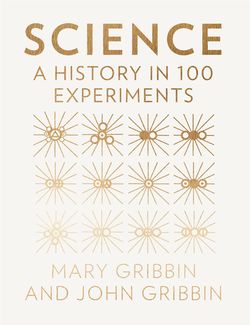Читать книгу Science: A History in 100 Experiments - John Gribbin - Страница 10
Оглавление| No. 5 | MEASURING THE MAGNETIC FIELD OF THE EARTH |
If you were looking for a key date to mark the transition from a superstitious and mystical view of the world to the scientific study of our surroundings, you could do worse than pick 1600, the year in which the first book based solely on scientific experimentation was published. The book was called De Magnete Magneticisque Corporibus, et de Magno Magnete Tellure (Concerning Magnetism, Magnetic Bodies, and the Great Magnet Earth), usually shortened to De Magnete, and it was the work of an Elizabethan physician/scientist who had spent years studying magnetic phenomena.
William Gilbert had been born in 1544, studied at Cambridge and eventually became a Court Physician, first to Elizabeth I then to James I of England and VI of Scotland. As a wealthy gentleman, he was able to indulge his passion for science as an amateur, but reportedly spent £5,000 of his own money on this ‘hobby’. He died, probably of bubonic plague, in 1603.
© Science Photo Library
Title page of the second edition of William Gilbert’s De Magnete, published in 1628.
Some of the most important experiments carried out by Gilbert concerned the magnetism of the Earth. At the time, seafarers were opening up the exploration of the world, and the magnetic compass was an invaluable tool, although nobody understood how it worked. Gilbert discussed the behaviour of compass needles with ships’ captains and navigators, and disproved by experiment many superstitions, such as the idea that a magnetic compass could be desensitized by rubbing it with garlic, or even by garlic breath. He then worked with naturally occurring magnetic rocks called lodestones, shaped into magnetized spheres that he called terrellae (meaning little Earths). He studied the magnetism of these spheres with magnetized needles which could be moved around the spheres. Gilbert showed that these behaved like compass needles at different places on Earth, and concluded that the Earth had an iron core which behaved like a bar magnet, with a North Pole and a South Pole. Before he carried out these experiments, philosophers had argued that compass needles pointed north because they were attracted to the Pole Star, or, alternatively, that there was a large magnetic island at the north geographical pole.
All of this represented a dramatic scientific leap forward, which is so obvious to modern eyes that it is hard to appreciate its revolutionary nature at the time. Gilbert regarded his terrellae as models of the real Earth, and accepted that the results he obtained – for example, in the way the angle of dip of a magnetized needle depends on its place on the magnetized sphere – could be scaled up to tell us what the Earth itself is like. He was extrapolating from models to the world at large, a key feature of science in subsequent centuries.
© Science Photo Library
William Gilbert’s illustration of the angle of dip of a magnetic field surrounding the Earth; the line AB is the equator, C is the North Pole, and D is the South Pole.
As a result of these experiments, Gilbert was the first person to appreciate that, because magnetic opposites attract, the end of a magnet that points northwards (towards the north magnetic pole of the Earth) ought to be called the south pole. (In modern language, scientists sometimes refer to the ‘north-seeking’ pole and the ‘south-seeking’ pole of a magnet to avoid this confusion.) Gilbert said: ‘All who hitherto have written about the poles of the loadstone, all instrument-makers, and navigators, are egregiously mistaken in taking for the north pole of the loadstone the part of the stone that inclines to the north, and for the south pole the part that looks to the south: this we will hereafter prove to be an error. So ill-cultivated is the whole philosophy of the magnet still, even as regards its elementary principles.’
Indeed, it was Gilbert who introduced terms such as ‘magnetic pole’ and ‘electric force’ into the language. He was the first person to realize that magnetism and electricity (a word he invented) are separate phenomena, and his work on magnetism was not improved upon for two centuries, until the work of Michael Faraday.
Gilbert’s book caused a sensation in its day, and was highly influential. Galileo was one of its readers, and commented favourably on it in a letter to a friend. Indeed, Galileo described Gilbert as the founder of the scientific method. In Gilbert’s own words: ‘In the discovery of secret things, and in the investigation of hidden causes, stronger reasons are obtained from sure experiments and demonstrated arguments than from probable conjectures and the opinions of philosophical speculators.’ That is science in a nutshell, and in his book Gilbert was careful to spell out every detail of his experiments, so that other people could carry them out and see the results for themselves. But he cautions whoever does this ‘to handle the bodies carefully, skilfully and deftly, not heedlessly and bunglingly; when an experiment fails, let him not in his ignorance condemn our discoveries, for there is naught in these Books that has not been investigated and again and again done and repeated under our eyes’.
